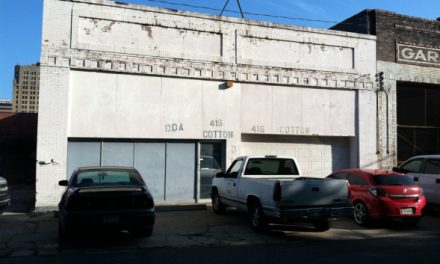It is an ironic thing that it takes a media flurry about a threatened closure to alert the community to the existence of three great museums in the heart of Shreveport. For years, the Shreveport Water Works Museum, the Spring Street Historical Museum, and the more recently-opened Shreveport Railroad Museum, have operated in relative obscurity. Though they may be little-known, their history—and the stories they tell—are big and powerful.
By providing clean water to drink and ample water to fight fires, the steam-powered Victorian-era Water Works led to the development of downtown and the city. The Railroad Museum, located on the grounds of the water works, tells the importance of railroads in the early days of Shreveport, more important even than the river or cotton, or perhaps even oil. The Spring Street Museum, located in arguably the city’s oldest building, uses photographs and found treasures to tell the tale of how a muddy, rough river settlement along the Texas Trail grew from a trading post to a thriving city.
All three museums are fascinating places that tell amazing historical stories, and each has their supporters, small but intensely dedicated groups of people. These groups singlehandedly built, stocked and staffed it (Railroad Museum), fundraised and wrote grants to maintain it (Water Works) and raised money, funded displays and donated exhibits (Spring Street) to it. The money from these museums’ ‘friends’ groups was welcomed by the Secretary of State, who for several years was the owner of the museums, but the big and impactful decisions were always made in Baton Rouge.
As money became harder to come by, state funding to the museums was squeezed more and more. Employees weren’t replaced, hours were shortened, and marketing became nonexistent. For facilities that depended on being open to attract visitors and attention, each hour closed and visitor turned away was an opportunity missed. When the state finally lowered the boom in the latter part of 2016 and announced that the museums were to be closed, the volunteers were plunged into what can only be described as the five stages of grief. Despair and aggravation turned quickly to determination, and the friends’ groups started mapping out ways to keep the museums active and open. It soon became apparent that the forced ‘divorce’ from the state might be a good thing. It would allow more local control, and with that, more events and longer hours of operation.
In late December, the museums were returned to their former owners. The Water Works and Railroad museums came back to the City of Shreveport, the Spring Street to an organization called the Colonial Dames. The City, not expecting the mid-year return of an old building housing a museum, called upon the friends- the McNeill Street Pumping Station Preservation Society– to keep it open. The Colonial Dames will likewise be depending on the Friends of the Spring Street Museum to help with funding there. Exciting changes are already in the air. The Spring Street Historical Museum’s hours have been extended; it is now open Tuesday-Saturday from 10-4. Both Spring Street and Water Works are part of the big Give for Good Day fundraiser on May 2, and all three museums have active Facebook pages and websites.
Expect to hear about more events and see more invitations to come experience all the amazing history that these places offer. These wonderful spaces have been saved- for now- but monthly bills must be paid. I encourage you to donate to them during Give for Good, join the Friends groups, come take a tour and bring others with you. These places and their history are ours again and we are the better for it. Let’s all work to keep them open.




